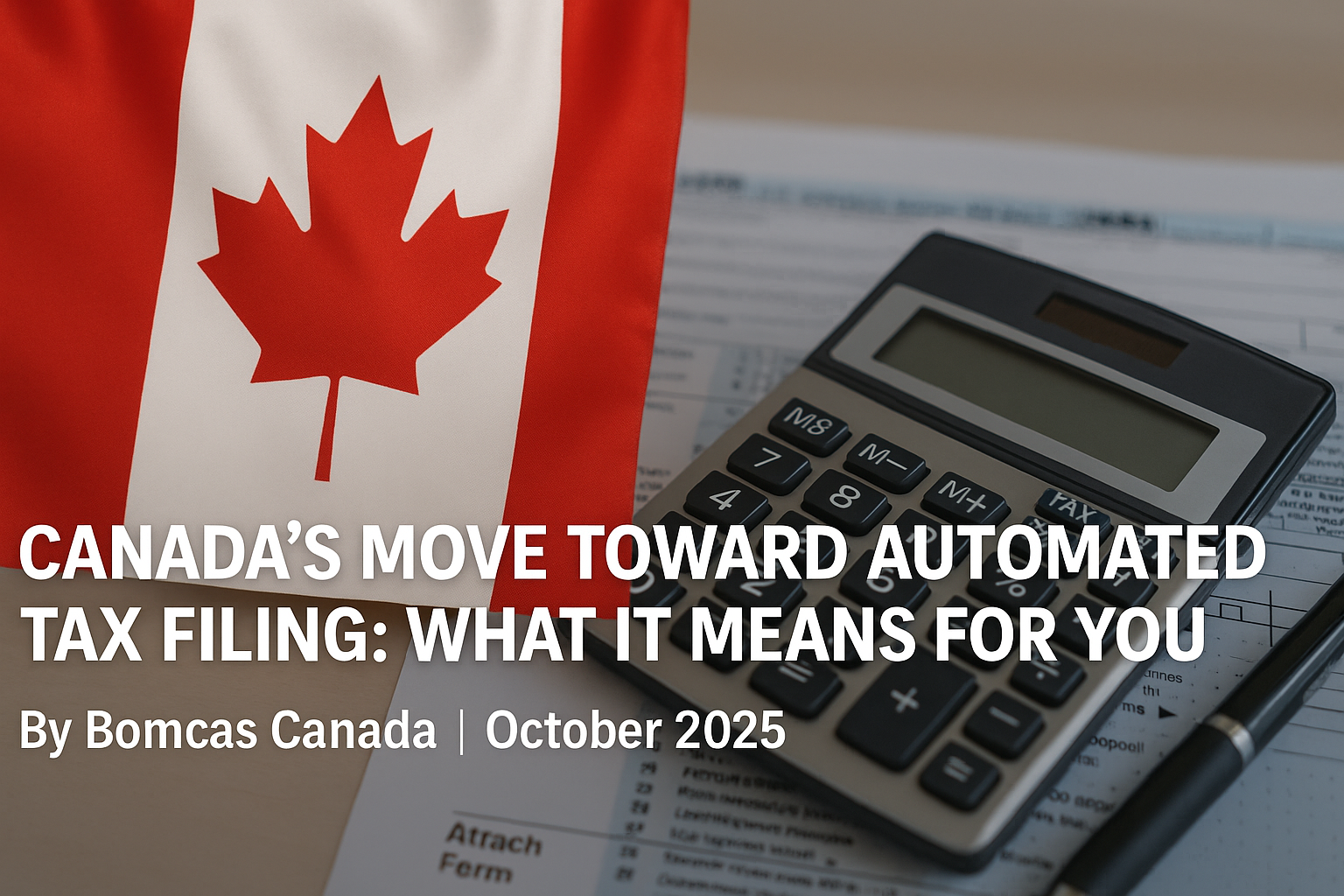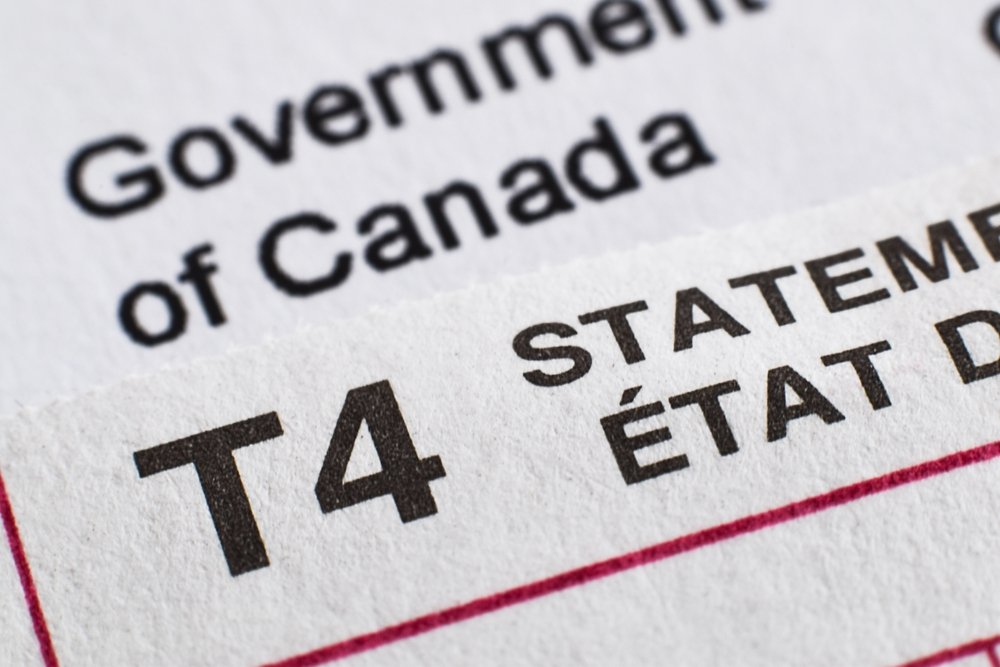The Ontario Child Care Tax Credit offers crucial financial relief to families grappling with rising childcare costs. This innovative program, introduced by the Ontario government, aims to ease the burden on working parents and caregivers by providing a refundable tax credit for eligible childcare expenses. As childcare costs continue to climb, understanding and leveraging this tax credit has become essential for many Ontario residents seeking to manage their family budgets effectively.
This comprehensive guide delves into the intricacies of the Ontario Child Care Tax Credit, shedding light on its eligibility criteria, calculation methods, and claiming process. It explores the types of childcare expenses that qualify, the impact on other tax benefits, and recent updates to the program. By thoroughly breaking down this tax credit, the guide aims to help Ontario families maximize their financial benefits and make informed decisions about their childcare arrangements.

What is the Ontario Child Care Tax Credit?
Definition and purpose
The Ontario Child Care Tax Credit, officially known as the Ontario Childcare Access and Relief from Expenses (CARE) Tax Credit, is a refundable tax credit introduced by the Ontario government. This innovative program aims to relieve families facing rising childcare costs financially. The CARE tax credit has been designed to put more money in the pockets of families while offering them the flexibility to choose childcare options that best suit their needs.
Key features
The CARE tax credit has several notable features that make it a valuable resource for Ontario families:
- Refundable nature: As a refundable tax credit, families can benefit from it even if they owe no taxes.
- Coverage: The credit covers up to 75% of eligible childcare expenses for qualifying families.
- Broad applicability: It applies to many childcare options, including services provided by childcare centers, homes, and camps.
- Income-based calculation: The tax credit rate is calculated based on the family’s adjusted income, with lower-income families receiving a higher percentage of their expenses covered.
- Maximum benefits: Families can receive up to CAD 8,328 per child under seven years of age, CAD 5,205 per child between seven and 16 years old, and CAD 11,451 per child with a severe disability.
- Additional support: For the 2021 tax year, the government provided an automatic top-up of 20% of the credit entitlement.
- Eligibility criteria: To claim the credit, families must be eligible for the Child Care Expense Deduction, have a family income of CAD 208,200 or less, and be Ontario residents at the end of the tax year.
Importance for Ontario families
The Ontario Child Care Tax Credit plays a crucial role in supporting families across the province:
- Financial relief: By covering a significant portion of childcare expenses, the credit eases the financial burden on families, particularly those with low and moderate incomes.
- Increased accessibility: The credit makes child care more affordable and accessible for approximately 300,000 families in Ontario.
- Flexibility in child care choices: It allows parents to choose the type of child care that works best for their family, whether in centers, homes, or camps.
- Support for working parents: The credit enables parents to offset childcare expenses when starting a new job, taking on longer hours, or pursuing further education.
- Complementary benefit: The CARE tax credit is provided in addition to the existing Child Care Expense Deduction, further enhancing the financial support available to families.
- Timely support: Beginning in the 2021 tax year, families can apply for and receive more timely support through regular advance payments during the year.
- Empowering parents: By putting parents at the center of childcare decision-making, the credit respects and supports diverse family needs and preferences.
The Ontario Child Care Tax Credit represents a significant step towards making child care more affordable and accessible for families across the province. Providing substantial financial support and flexibility in childcare choices empowers parents to make decisions that best suit their family’s needs while balancing work, education, and child-rearing responsibilities.
Eligibility Criteria
The Ontario Child Care Tax Credit, also known as the Ontario Childcare Access and Relief from Expenses (CARE) Tax Credit, has specific eligibility criteria that families must meet to claim this financial benefit. These criteria encompass various aspects, including income requirements, residency conditions, and eligible children.
Income Requirements
To qualify for the Ontario Child Care Tax Credit, families must meet certain income thresholds:
- The tax credit supports families with incomes up to CAD 208,200.03.
- It is particularly beneficial for families with low and moderate incomes.
- The credit amount is calculated based on the family’s adjusted income, with lower-income families receiving a higher percentage of their expenses covered.
Residency Conditions
To be eligible for the CARE Tax Credit, applicants must fulfill the following residency requirements:
- Be an Ontario resident at the end of the tax year.
- Be eligible to claim the Child Care Expense Deduction.
These conditions ensure that the tax credit benefits Ontario families who have incurred childcare expenses throughout the year.
Eligible Children
The CARE Tax Credit has specific criteria for eligible children:
- Age requirement: The child must be under 16 years of age unless they are a disabled dependent child.
- Relationship: The child must be:
- The child of the person claiming the credit
- The child of a common-law partner or spouse
- Dependent on the person making a claim or that person’s partner
- Income limit: The child’s income cannot exceed CAD 16,751.77.
It’s important to note that eligible individuals or institutions must provide childcare services. The Ontario Child Care Tax Credit covers a wide range of child care options, including services provided by:
- Child care centers
- Home-based child care providers
- Day camps and day sports schools (where the primary goal is to care for children)
- Day nursery schools and daycare centers
- Educational institutions (for the part of the fees that relate to child care services)
- Boarding schools, overnight sports schools, or camps where lodging is involved
However, there are restrictions on who can provide childcare services for this tax credit. If an individual is providing the child care services, they cannot be:
- The eligible child’s parent
- The spouse or common-law partner of the child’s father or mother
- A person for whom the claimant or another person claimed an amount on line 30400, 30425, 30450, or 30500 on their tax return
- A person under 18 years of age who is related to the claimant
By meeting these eligibility criteria, Ontario families can benefit from the CARE Tax Credit, which allows them to claim up to 75% of their eligible childcare expenses. This tax credit provides financial relief and will enable families to choose childcare options that best suit their needs.
Calculating the Tax Credit
The Ontario Child Care Tax Credit, or the CARE credit, is calculated based on a family’s adjusted income and eligible child care expenses. This calculation method ensures that families receive financial support proportionate to their income level and childcare costs.
Income-based calculation method
The family’s adjusted income determines the tax credit rate. Several factors are added to the net income reported on line 23600 (line 236 before 2019) of the tax return to calculate adjusted income. These factors include:
- Child care expenses deducted
- Deduction for split income
- Employment Insurance (EI) benefit repayment deduction
- Old Age Security (OAS) clawback
The tax credit rate varies depending on the adjusted family income:
| CAD 27,760 or less | 75% | N/A |
| Over CAD 27,760 up to CAD 55,520 | 75% | 2% for each CAD 3,470 or portion above CAD 27,760 |
| Over CAD 55,520 up to CAD 83,280 | 59% | 2% for each CAD 6,940 or portion above CAD 55,520 |
| Over CAD 83,280 up to CAD 208,200 | 51% | 2% for each CAD 4,996.80 or portion above CAD 83,280 |
| Over CAD 208,200 | 0% | N/A |
Maximum credit amounts
The Ontario Child Care Tax Credit has set maximum amounts that families can receive based on the age and circumstances of their children:
- Up to CAD 8,328 per child under the age of seven
- Up to CAD 5,205 per child between the ages of seven and 16
- Up to CAD 11,451 per child with a severe disability
It’s important to note that for the 2021 tax year, the government provided an automatic top-up of 20% of the credit entitlement. This resulted in increased maximum amounts:
- Up to CAD 9,993.60 per child under the age of seven (including the top-up)
- Up to CAD 6,246 per child between the ages of seven and 16 (including the top-up)
- Up to CAD 13,741.20 per child with a severe disability (including the top-up)
Examples of calculations
To illustrate how the Ontario Child Care Tax Credit is calculated, let’s consider two examples:
Example 1:
A family with an adjusted income of CAD 69,400 and eligible child care expenses of CAD 13,324.80. The maximum allowable deduction is CAD 11,104.
- Tax credit rate: 55% (based on the income bracket)
- Calculation: 55% x CAD 11,104 = CAD 6,107.20
- For 2021 only: CAD 6,107.20 x 1.2 (20% top-up) = CAD 7,328.64
Example 2:
A family with an adjusted income of CAD 13,880 and eligible child care expenses of CAD 11,104.
- Tax credit rate: 75% (based on the income bracket)
- Calculation: 75% x CAD 11,104 = CAD 8,328
- For 2021 only: CAD 8,328 x 1.2 (20% top-up) = CAD 9,993.60
Notably, the claim for c expenses cannot exceed two-thirds of the claimant’s earned income for the year. Additionally, when using tax software, individuals should input the amount of child care costs for each child, even though there is no longer a child tax credit for the 2017 or later taxation years.
By understanding these calculation methods and examples, families can better estimate their potential Ontario Child Care Tax Credit and make informed decisions about their c arrangements. BOMCAS Canada, as a trusted accounting firm in Canada, can provide valuable support for accounting and tax return services, helping families navigate the complexities of this tax credit and maximize their benefits.
Eligible Child Care Expenses
The Ontario Child Care Tax Credit allows families to claim certain expenses related to child care. Understanding which expenses qualify and which do not is crucial for maximizing the benefits of this tax credit.
Qualifying expenses
Child care expenses encompass amounts paid to have someone look after an eligible child, enabling the parent or guardian to earn income, attend school, or conduct research under a grant. The following expenses are generally considered eligible for the tax credit:
- Payments to caregivers providing c services
- Fees for day nursery schools and daycare centers
- Costs associated with educational institutions, specifically for the portion of fees related to child care services
- Expenses for day camps and day sports schools where the primary goal is to care for children
- Fees for boarding schools, overnight sports schools, or camps involving lodging (subject to specific conditions)
It’s important to note that this list is not exhaustive. For a more comprehensive understanding of deductible child care expenses, individuals should consult Income Tax Folio S1-F3-C1, Child Care Expense Deduction.
Non-eligible expenses
While many c costs are eligible, certain expenses do not qualify for the tax credit. These include:
- Medical or hospital care costs
- Clothing expenses
- Transportation fees
- Education costs at an educational institution, such as tuition fees for regular programs or sports study programs
- Fees for leisure or recreational activities (e.g., tennis lessons or annual registration for Scouts)
Additionally, expenses for which the individual or another person received or is entitled to receive a reimbursement or any other form of assistance not included in income cannot be claimed. This includes benefits such as the hiring credit for small businesses and the small business job credit received under the Employment Insurance Act.
Documentation requirements
To claim the Ontario Child Care Tax Credit, proper documentation is essential. When applying for benefits such as the Canada Child Benefit (CCB) or the GST/HST credit for the first time, individuals must provide proof of their child’s birth and other relevant information.
Acceptable documents for confirming a child’s information include:
- Birth certificate or certified copy of birth registration
- Hospital record of birth or record from the attending physician, nurse, or midwife
- Baptismal or cradle roll certificate or other church record
- Indian status card
- Passport
- Documents issued by Immigration, Refugee and Citizenship Canada (e.g., Canadian citizenship certificate, permanent resident card, confirmation of permanent residence)
- Notice of decision issued by the Immigration and Refugee Board of Canada
- Temporary resident permit
It’s crucial to apply for the CCB as soon as certain situations occur, such as:
- The birth of a child
- A child starting to live with the applicant or returning after a temporary period away
- Beginning, ending, or changing a shared custody arrangement
- Gaining custody of a child
- Meeting eligibility conditions for the first time
Additional documentation may be required if a child has been living with the applicant for more than 11 months. It’s also important to note that if any documents are in a language other than English or French, a copy of the original documents with an acceptable English or French translation must be provided.
BOMCAS Canada, a trusted accounting firm in Canada, can provide valuable support for accounting and tax return services, helping families navigate the complexities of eligible childcare expenses and maximize their benefits under the Ontario Child Care Tax Credit.
How to Claim the Tax Credit
Filing Process
To claim the Ontario Child Care Tax Credit, individuals must complete and submit the appropriate forms as part of their personal income tax return. The process involves calculating eligible childcare expenses and including them on line 214 of the tax return. It’s crucial to ensure all information is accurate and up-to-date to maximize the benefits of this tax credit.
Required Forms
The primary form required for claiming child care expenses is Form T778, Child Care Expenses Deduction. This form helps calculate the deductible childcare expenses that can be claimed on line 214 of the tax return. The Canada Revenue Agency (CRA) provides several options for accessing and completing this form:
- Accessible Fillable PDF: This option allows individuals to download and fill out the form electronically using Acrobat Reader 10 or higher.
- Standard Print PDF: This version can be printed and filled out by hand for those who prefer a physical copy.
- Large Print PDF: This option caters to individuals who require larger text for easier reading.
- E-text File: This format is compatible with screen readers, making it accessible for individuals with visual impairments.
- Alternate Formats: The CRA also offers additional formats such as digital audio, electronic text, braille, and large print upon request.
When completing Form T778, individuals must include details of payments made to eligible childcare providers. These may include:
- Caregivers providing child care services
- Day nursery schools and daycare centers
- Educational institutions (for the portion of fees related to child care services)
- Day camps and day sports schools primarily focused on childcare
- Boarding schools, overnight sports schools, or camps involving lodging (subject to specific conditions)
It’s important to note that specific individuals cannot be considered eligible childcare providers for tax purposes. These include the child’s parent, the spouse or common-law partner of the child’s parent, a person claimed as a dependent on the tax return, or a person under 18 years of age who is related to the claimant.
Deadlines
While specific deadlines for claiming the Ontario Child Care Tax Credit are not mentioned in the provided information, adhering to general tax filing deadlines is crucial. For most individuals, the deadline for filing personal income tax returns is April 30th of the following year.
However, it’s worth noting that filing taxes electronically by March 15, 2024, may have additional benefits. For instance, individuals who file by this date should receive their next Canada Carbon Rebate (CCR) payment on April 15, 2024. Those who file after March 15, 2024, can generally expect to receive their CCR payment 6-8 weeks after their tax return has been assessed.
Individuals can access their My Account on the CRA website to stay informed about payment dates and other important information. This platform allows users to view upcoming payments and sign up for benefit and credit payment reminders, typically sent about one week before the payment is issued.
BOMCAS Canada, as a trusted accounting firm in Canada, can provide valuable support for navigating the complexities of the Ontario Child Care Tax Credit claim process. Their accounting and tax return services expertise can help ensure that all necessary forms are completed accurately and submitted on time, maximizing the benefits for eligible families.
Impact on Other Tax Credits and Benefits
The Ontario Child Care Tax Credit, also known as the Childcare Access and Relief from Expenses (CARE) tax credit, significantly impacts the financial landscape for families in Ontario. This tax credit interacts with other tax benefits and affects various income groups.
Interaction with federal childcare deduction
The CARE tax credit is calculated as a percentage of the Child Care Expense Deduction, which provides provincial and federal income tax relief for eligible child care expenses. This means that expenses eligible for the federal Child Care Expense Deduction also qualify for the Ontario Child Care Tax Credit. This interaction allows families to maximize their tax benefits at both the federal and provincial levels.
Individuals must be eligible for the Child Care Expense Deduction to claim the CARE tax credit. Eligible expenses include payments made to:
- Caregivers providing child care services
- Day nursery schools and daycare centers
- Educational institutions (for the portion of fees related to child care services)
- Day camps and day sports schools primarily focused on childcare
- Boarding schools, overnight sports schools, or camps involving lodging (subject to specific conditions)
It’s important to note that certain expenses cannot be claimed, such as:
- Medical or hospital care costs
- Clothing expenses
- Transportation fees
- Education costs at an educational institution
- Fees for leisure or recreational activities
Effect on other provincial benefits
The introduction of the CARE tax credit has significantly impacted Ontario’s fiscal landscape and the distribution of benefits across different income groups. Some critical effects include:
- Cost to the province: The Financial Accountability Office (FAO) estimates that the CARE tax credit will cost Ontario approximately CAD 638.48 million per year on average, or CAD 3.19 billion over five years.
- Number of beneficiaries: Out of approximately 1,477,000 families in Ontario with children aged 16 or under, about 310,000 families are expected to receive the CARE tax credit. However, around 237,000 families with childcare expenses will not receive the credit, primarily due to their family income exceeding the CAD 208,200.03 eligibility limit.
- Benefit distribution: The average CARE tax credit benefit per household is estimated to be approximately CAD 1,804.40. Interestingly, the average benefit amount is similar across income groups despite the income-tested nature of the credit. Lower-income families spend less on childcare expenses, while higher-income families claim more expenses but receive lower benefit rates.
- Income group impact: Approximately two-thirds of the CARE tax credit benefit will be distributed to families over the 50th income percentile (CAD 88,415.61 or more). This includes almost 10% of the total benefit to families above the 75th income percentile (CAD 164,755.62). Only 3% of the total benefit will be distributed to low-income families below the 25th percentile (CAD 29,703.20 or less).
The CARE tax credit aims to reduce childcare costs for working families and help experienced employees return to work sooner after parental leave or job separation. However, its impact varies across income groups, with a significant portion of the benefits going to middle and higher-income families.
BOMCAS Canada, as a trusted accounting firm in Canada, can provide valuable support for families navigating the complexities of the CARE tax credit and its interaction with other tax benefits. Their accounting and tax return services expertise can help families maximize their benefits while complying with all relevant regulations.
Changes and Updates for 2021
The Ontario government has implemented significant changes to the Ontario Child Care Tax Credit for the 2021 tax year, aiming to provide additional support to families during challenging times. These updates reflect the province’s commitment to making child care more affordable and accessible.
Temporary top-up increase
In a notable development, the Ontario government announced a temporary top-up for the Childcare Access and Relief from Expenses (CARE) tax credit. For the 2021 tax year only, families will receive a 20% increase in their CARE credit entitlement. This one-time boost has been designed to offer extra financial relief to eligible families.
The impact of this temporary top-up is substantial. For instance, a family with an adjusted income of CAD 70,788.01 typically receives a tax credit rate of 53%. With the 20% increase, their credit would rise from CAD 5,885.12 to CAD 7,062.14. Similarly, a family with an adjusted income of CAD 69,400.01 would see their credit increase from CAD 6,107.20 to CAD 7,328.64.
Reasons for the change
The government’s decision to implement this temporary top-up stems from several factors. It acknowledges the increased financial strain on families due to the ongoing global situation. By providing this additional support, the government aims to help experienced employees return to work sooner after parental leave or job separation.
Moreover, this change aligns with the province’s broader strategy to invest in early years and child care funding. For the 2021-22 fiscal year, the Ontario government has committed to investing more than CAD 2.78 billion in this sector, including approximately CAD 541.32 million annually, to support the childcare tax credit.
How it affects families
The temporary top-up for 2021 directly and positively impacts eligible families. It increases the maximum benefit entitlement to:
- Up to CAD 9,993.60 per child under seven years of age (from CAD 8,328)
- Up to CAD 6,246 per child between seven and 16 years old (from CAD 5,205)
- Up to CAD 13,741.20 per child with a severe disability (from CAD 11,451)
While this increase provides immediate relief, it’s important to note that the CARE credit is not indexed to inflation. As a result, the Financial Accountability Office (FAO) estimates a decline in the use of credit due to inflation and rising household incomes over time.
For families seeking to maximize their benefits, BOMCAS Canada, a trusted accounting firm, can provide valuable support for accounting and tax return services in Canada. Their expertise can help navigate the complexities of the CARE tax credit and ensure families receive the full benefits they’re entitled to under these new changes.
Conclusion
The Ontario Child Care Tax Credit significantly influences the financial landscape for families in the province. This innovative program provides crucial support to ease the burden of rising childcare costs, offering relief to approximately 310,000 families. To maximize its benefits, it’s essential to understand the eligibility criteria, calculation methods, and the types of expenses that qualify. The recent updates, including the temporary top-up for the 2021 tax year, demonstrate the government’s commitment to making child care more affordable and accessible.
Navigating the complexities of tax credits can be challenging, but resources are available to help families make the most of this financial support. BOMCAS Canada is your accounting firm when you need support with accounting and tax return services. By staying informed about the Ontario Child Care Tax Credit and seeking professional guidance, families can better manage their childcare expenses and make informed decisions about their childcare arrangements. This tax credit and other provincial and federal benefits are crucial in supporting Ontario families as they balance work, education, and child-rearing responsibilities.










 View Our Location
View Our Location





 181 Meadowview Bay, Sherwood Park, AB T8H 1P7, Canada (Online Clients Only)
181 Meadowview Bay, Sherwood Park, AB T8H 1P7, Canada (Online Clients Only)